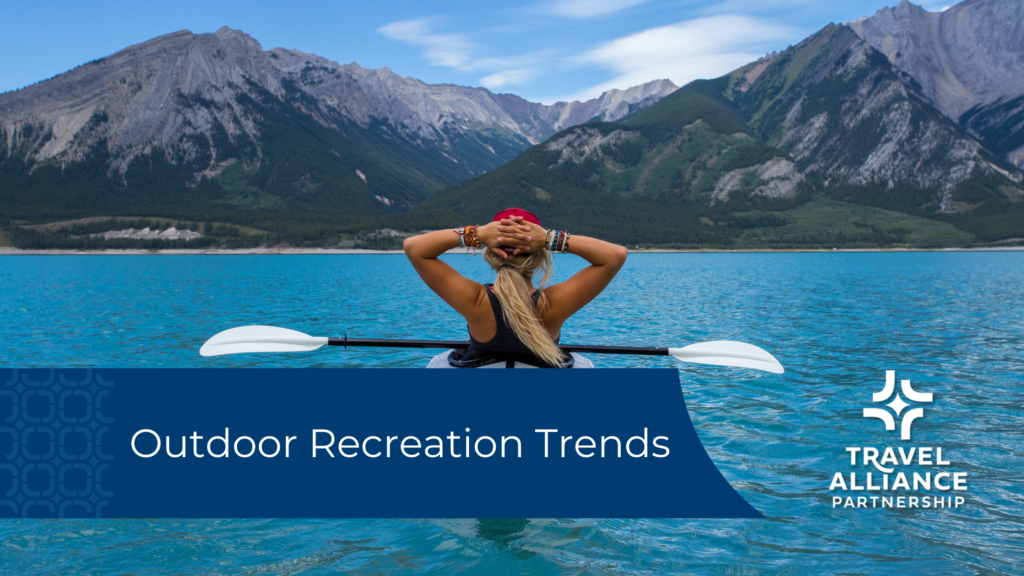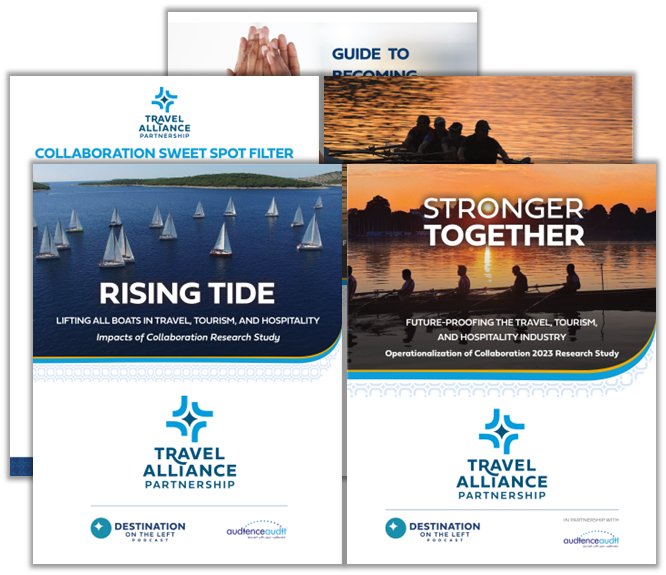Outdoor Recreation Trends
Outdoor participation is at a record-high, a dynamic uptick that has made a significant impact on the travel and tourism industry since 2020. This evolution is driven by changing preferences among travelers seeking authentic experiences and deeper connections with nature. Technology plays an increasingly integral role in how people plan and experience outdoor recreation activities, and sustainability has been emphasized like never before. Additionally, the events of recent years have reshaped travel behaviors, leading to a stronger focus on health, wellness, and the desire for adventure. This shift presents both challenges and opportunities for businesses and destinations looking to keep up with the evolving tastes of outdoor enthusiasts.

Takeaways from the NYSTIA Conference
Last month, I attended the 2024 New York State Tourism Industry Conference in Niagara Falls, NY. A panel discussion with tourism professionals in the outdoor sector demonstrated the force of outdoor tourism:
- Outdoor participants have become more diverse since 2022, with an increase in visitation among Black, Hispanic, and LGBTQIA+ travelers.
- 80% of outdoors activities experienced an increase in participation, from larger categories like camping to smaller categories like skateboarding.
- Outdoor recreation generates $1.1 trillion in economic output, surpassing industries like mining and farming.
An Increase in Technology
As artificial intelligence (AI) continues to expand into every facet of the industry, it’s no surprise that similar technology has made its way into the outdoor sector. Along with AI, augmented reality and virtual reality are becoming more prevalent in outdoor activities. Travelers can use programs to help map out their routes, curate experiences personalized exactly for them, or enhance their outdoor experience overall with relevant information in real-time.
The Impact of Health and Wellness
While it’s widely recognized that spending time outside has an impact on mental wellness, it seems as though travelers are embracing this self-care strategy more than ever. Wellness retreats, camping trips and other group activities offer an outlet for people to disconnect from the outside world and instead tap into their own wellbeing.
Top Outdoor Recreation Locations
Outdoor destinations should prepare to welcome travelers of all types this year. In addition to an expanded, diverse outdoor audience, travelers are opting to travel solo. More than two-thirds of travelers (69 percent) are planning on taking a solo trip in 2024, including 76 percent of Millennials and Gen-Z. Where are these adventurers going?
Truly Hidden Gems
Most travelers are actually looking to venture into unfamiliar places and discover their own hidden gems. US travelers in particular are being drawn to western scenes in outdoorsy destinations with a rustic ranch feel, and 70 percent of millennials and Gen Z’ers report seeking travel experiences to places that their family and friends haven’t heard of.
Nature Tourism
Another trend we’re seeing with tourists is the demand for nature tourism. People are yearning for a trip where they can slow down and connect with nature in ways that they haven’t before. In fact, 42% of travelers are booking activities that focus on bettering their mental and physical health, such as forest bathing. “Microadventures” are also increasingly becoming popular as they allow travelers to connect with nature on smaller, shorter, and cheaper excursions.
Sustainability
Sustainable tourism is critical for maintaining the natural beauty of a destination, minimizing littering and waste, protecting cultural and historical sites, and respecting the local communities. This travel style is no longer a niche or trend – it’s a demand. In fact, over half (53%) of travelers are seeking accommodations that blend comfort with innovative sustainability features.
Destinations also must continue to consider the effects of overtourism when it comes to sustainable tourism. The issue of overtourism arises when there are too many visitors to a particular destination. The constant stream of people at specific locations and monuments inevitably puts pressure on infrastructure and natural resources, leading to the destruction of natural ecosystems, increase in waste, and the departure of local residents. With this in mind, destinations should act as an advocate for their residents, ensuring the health and safety of their green spaces.
Author
Related Posts
How Curated Experiences Can Help Your Tourism Marketing
In years past, travelers may have been satisfied to see sites like the Eiffel Tower or Colosseum; now they want to get behind the scenes,...
Marketing for Group Travel: Building Solid Relationships with Tour Operators
Group travel is a significant segment of the tourism market, and if you want to see those buses pulling up to the curb and filling…
